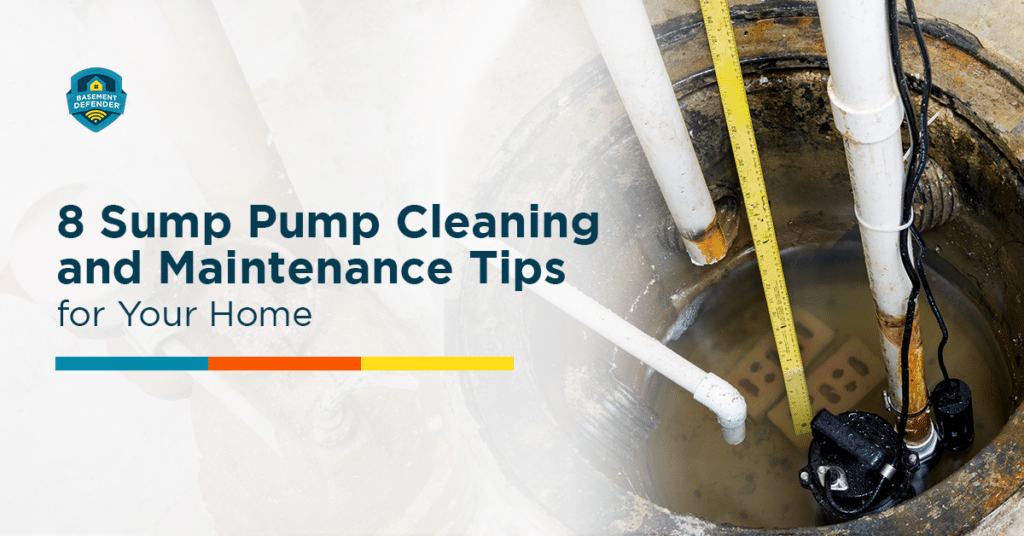
As a homeowner in the US with a basement or crawl space, you know the significance of having a reliable sump pump system. These systems prevent water damage by efficiently removing excess water from the sump pit.
They’re essential in regions prone to heavy rainfall, especially in the Midwest, East Coast, and certain southern states. Study shows that over 98% of American homes with basements will experience water-related issues at least once, ranging from minor leaks to full-blown flooding.
These incidents can lead to expensive repairs and jeopardize your home’s structural integrity, not to mention the potential loss of valuable belongings. Sump pump maintenance acts as your first line of defense against water damage.
A regular maintenance cleaning of your sump pump pit system will help it maintain its best performance to prevent water intrusion. Read on for more essential sump pump maintenance tips for your home!
Keeping your sump pump system in tip-top shape protects your home from water damage. Some of the guidelines you can follow for sump pump pit cleaning and system maintenance include the following:
Regularly inspect your sump pump’s power supply and ensure it’s connected correctly. A dependable power source is crucial for your sump pump function when needed most.
Consider purchasing a battery backup sump pump, like the Basement DefenderTM Battery Backup Kit, to be sure your pump continues operating even during power outages, protecting against flooding and water damage.
Thoroughly inspect the discharge pipe and its connections for any signs of leaks, cracks, or blockages that could hinder the proper water flow away from your home. Check that the couplings are securely fastened to prevent any water leakage.
Additionally, test the check valve, which prevents water from back flowing into the sump pit, so you can be sure it’s functioning correctly. You can perform a simple test by pouring water into the sump pit and observing if the water returns. If it does, replace the faulty check valve to maintain the proper functioning of your sump pump system.
Regularly cleaning the sump pit and keeping the pump clear is vital to maintaining optimal performance. Over time, debris, sediment, and sludge can accumulate, potentially clogging the pump or impeding its operation.
To clean the sump pit, disconnect the power to the pump. Remove any visible debris or sediment from the pit using a wet vacuum or a sturdy brush. Be thorough in your cleaning, paying attention to corners and hard-to-reach areas.
Avoid using harsh substances that may damage the pump or contaminate the water. Instead, use simple water and mild detergent solutions to effectively clean the pit.
The float switch is a critical component of your sump pump system as it activates the pump when water levels rise. To confirm its proper functioning, conduct a simple test. Fill the sump pit with water and observe if the float switch rises with the water level, triggering the pump to start.
If the switch fails to activate the pump, it may need an adjustment or replacement, so consult a professional if necessary. Also, you shouldn’t forget to test the alarm system, if installed, to guarantee it works correctly. The alarm should alert you to any pump issues or high-water levels in the pit.
Iron ochre, a reddish-brown slime, can accumulate in sump pits, leading to potential clogging and operational issues for your pump. To address this concern, consider power jet drain tile cleaning.
This method utilizes high-pressure water to dislodge and remove iron ochre buildup, restoring proper drainage and preventing clogs. Another effective measure is elevating your sump pump with a pump stand, reducing the risk of iron ochre sludge.
Additionally, you should frequently check and clean your sump pit, removing accumulated debris, including iron ochre sediment. Since iron ochre often combines with gravel and mud, you can use a wet vacuum or sturdy brush for thorough cleaning.
Airlock occurs when the air becomes trapped in the discharge pipe, hindering the pump’s ability to effectively expel water. Weep holes play a vital role in preventing airlock and maintaining pump functionality.
To prevent air lock, prime the discharge pipe by filling the sump pit with water until the float switch activates and initiates pump operation. It helps to guarantee water flows through the discharge pipe without any air blockage.
Regularly check the weep holes to establish they are clear of obstructions. Clogs can be gently removed using a small wire or pipe cleaner, allowing water to enter the sump pit freely.
Each AC pump should have its dedicated circuit breaker to provide the necessary power supply and protect it from electrical overloads. Routinely inspect the electrical connections for peace of mind regarding the reliable operation of your sump pump.
During your inspection, check the breaker panel to confirm that the sump pump is connected to a dedicated circuit. It helps the pump receive consistent power and prevents potential issues caused by shared circuits. It’s not recommended to use surge protectors for your sump pump.
While surge protectors are designed to safeguard electronic devices against power surges, they can interfere with the pump’s electrical requirements.
Installing a smart sump pump monitoring system is worth considering to remotely track its performance and operation. With technology like the Basement DefenderTM app, you can receive real-time alerts and notifications regarding potential issues, even when you’re not at home.
This investment allows you to stay knowledgeable about the status of your basement or crawl space anytime, anywhere, providing peace of mind.
Regular cleaning and maintaining your sump pump system is essential for optimizing its performance and lifespan. Following the steps above, you can enjoy the full benefits of a well-maintained sump pump system.
If you run into any problems or are unclear about any maintenance tasks, it’s advisable to seek professional assistance. Their expertise reassures your sump pump’s proper functioning, saving you from getting a wet basement or crawl space.
To keep your sump pump in top shape, consider investing in a high-quality monitoring system by partnering with Basement DefenderTM. Our advanced monitoring technology lets you remotely monitor your sump pump’s performance and receive real-time alerts.
To learn more about Basement DefenderTM, simply fill out our contact form, and we’ll reach out to you. You can also explore our other products available in our online store.

Roy is a respected authority in the waterproofing industry, with over 40 years of experience under his belt. His company, Perma-Seal, has earned a reputation as Chicagoland’s premier waterproofing contractor, thanks to Roy’s unwavering commitment to quality, integrity, and customer satisfaction.
His latest innovation, the Basement Defender, is a testament to his dedication to providing homeowners with the best possible protection against basement flooding, representing a major leap forward in the industry’s efforts to prevent water damage and save homeowners from costly repairs.